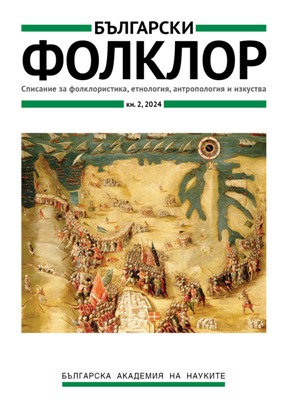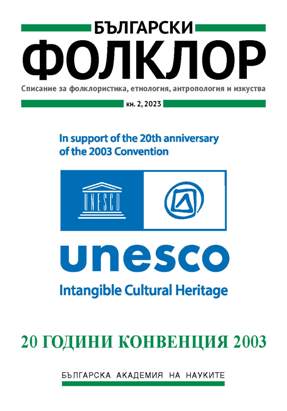
We kindly inform you that, as long as the subject affiliation of our 300.000+ articles is in progress, you might get unsufficient or no results on your third level or second level search. In this case, please broaden your search criteria.


The 2003 Convention and Its Implementation in Bulgaria
More...
The 2003 Convention and Its Implementation in Bulgaria
More...
The 2003 Convention and Its Implementation in Bulgaria
More...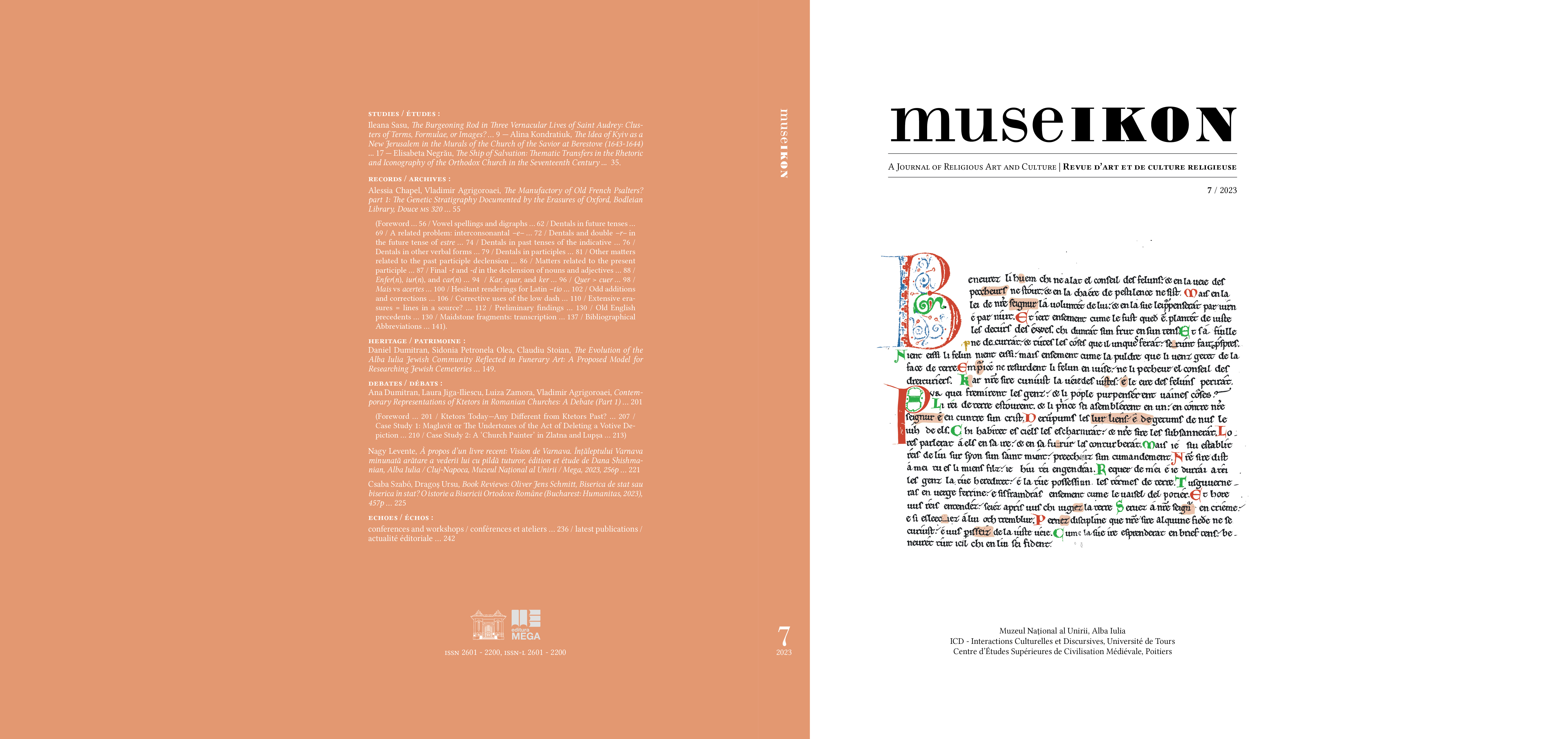

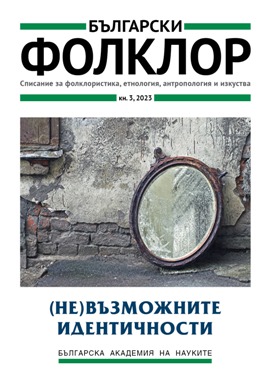
The political changes after 1989 in Bulgaria and the country’s difficult economic transition, temporarily led to a decline in patriotic feelings among the Bulgarian people. With few exceptions, such as Bulgaria's triumphant performance at the 1994 World Cup, which led to unprecedented national pride, the idea of belonging and unity began to dissolve in the harsh and uncertain conditions of the transition from socialism to a market economy. This led to a deterioration of relations in Bulgarian society, a sharp revision of values, a decrease in tolerance, and the entering into everyday life of the so-called language of hatred. Political parties were created which, under the guise of patriotism, openly promoted more radical sentiments toward various types of minorities. An increase in domestic crime at the time proved to be a fertile ground for such rhetoric. The fact that from the beginning of the new millennium until now, some Bulgarians have been invariably supporting nationalist parties, shows that these political formations are an expression of permanently present sentiments in the Bulgarian society. The current text will focus on nationalist manifestations towards the second-largest ethnic minority in the country – the Roma. For this purpose, specific events will be examined and analysed, and an attempt will be made to provide answers to several questions such as: What is the role of the Bulgarian minorities in these nationalist attitudes? Is it possible to build an identity based on the rejection of the other, and what are the manifestations of this rejection? How do such manifestations of intolerance and confrontation reflect on the identity of the minority itself? Who benefits from this rhetoric, and what are its consequences for the Bulgarian society?
More...
The article proposes to refine the periodisation of Russian and Russian-speaking immigration in Bulgaria. It examines the necessary context, describing changes in motivations and identity projects of these groups from (relatively) 2013 to 2023. The text outlines the specific tool - the blog, reinvented in a modern context – the text highlights the differences between it within the visual platform Instagram and its classical visual version. Thus, some of the main features of Russian-speaking users’ own online representations are brought to the fore through the implicit and (counterintuitively) explicit discourses of Russian-speaking users. They focus the analysis on their identifications and the specifics of adaptation and its dynamics, maintaining a sense of community but also accumulating social capital that directly reflects their plans and strategies for the present and future.
More...
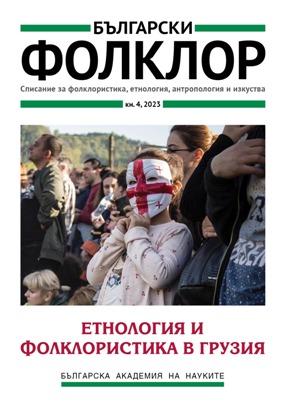
The article briefly evaluates the vast literature relating to the worship of St. George in Georgia and draws on the ethnographic data collected by the author in the years 1977 to 1987. It explores the worship of St George in the Caucasus Georgia both in the past and present. Consequently, it discusses such categories as religious practice, belonging to the parish and territory, identity and, sharing holy places, epithets of the Saint, hybrid cults, etc. The materials used are: written historical sources, ethnographic data attested in the writings of Christian Missionaries (Christopher Castelli, Jean Chardin, Arcangelo Lamberti, etc.), the ethnographic data gathered (during 2018-19) among Internally displaced persons, and contemporary emic and etic researches undertaken by anthropologists of the 20th and 21st centuries. The argument of the present contribution is based upon a series of ethnographic observances that present traditional feasts of the saint and their transformations in the light of current political processes. Accordingly, detailed ethnographic field data and observations are contextualized in time and space, using the explorations and studies of anthropologists and historians. The article tries to show how once traditional Christian site (lieux de mémoire in Pierre Nora’s sense) with its real environment and with is firm identity is deterritorialized and transformed into a shared place of mixed and ambiguous pilgrimage place through the political processes and hybridization.
More...
Georgian everyday life is highly tied up with the rich religious traditions that have been developed as a result of the centuries-long synthesis of pre-Christian and Christian practices and worldviews. The Soviet period caused the fragmentation of the traditional religious knowledge and the practice moved to the household level and was paganized. In the post-Soviet period, the burst of religious sentiments and search for identity increased the involvement of big masses to religious practices. The transformations were accompanied by a process of individualization of religion, which has led to a change of forms of religiosity. Based on the ethnographic data of East Georgia, the article discusses the correlation of the normative, vernacular and resistant forms of religiosity. Historical-comparative and parallel analyses are used to research two examples of religious practice: Lomisoba and Berikaoba. Lomisoba is analyzed as an example of hybrid, massive, collective holiday. Berikaoba is more local, not connected to a sacred site, performative festival. It is argued that the contemporary processes are having an impact on the religiosity and the religiosity of certain groups is trying to be defined in new forms. All the old and new forms of religiosity are explicitly displayed and played out in contemporary Georgia. At the same time there are some hidden, or rather implicit practices.
More...
The article introduces to the late medieval romance in verse Vepkhistq’aosani by Shota Rustaveli – the central artefact in Georgian cultural self-awareness and the top item of ‘high’ Georgian cultural export. It briefly presents its narrative content, indicating the correlation of two plot-lines (initially through enframing, after some point though horizontal interlacing). It briefly introduces to the main fluctuations and 20th-century tendency in translating the work’s title, interpreting the fluctuations as indicative of aesthetic differences, and the tendency as an indication of the ‘cultural market’ success of the Soviet-Georgian (in its ideological and aesthetical basis –a Stalinist and socialist-realist) image of Rustaveli’s masterpiece. It presents two influential to dominant claims of Georgian Rustvelology – that the work is a poema (and not a novel/romance) and that it displays, at least partially, Renaissance outlook and poetics, – considering these claims as tools (1) of Soviet “Culture Two” to allot a proper place to Georgian nation within the alternative modernity of the USSR and its premodern background-under-construction, and (2) of Soviet-Georgian cultural nationalism to define a usable past in post-Soviet conditions; and (3) as beliefs. It revitalises the option to contextualise the work of Rustaveli (and, indirectly, Georgian cultural identity) in non-Eurocentric terms, providing some factographic and theoretic clues from the field of macrohistory (J. Abu-Lughod et al.) and a methodological one from sociology of arts (P. Bourdieu).
More...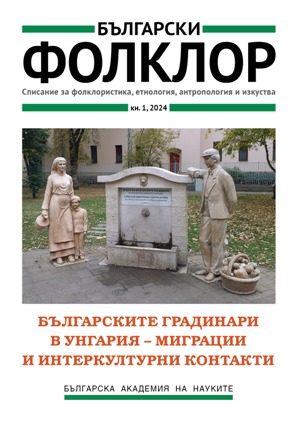
The article presents the specific dimensions of the “garden as a workshop” developed by the Bulgarian immigrant gardeners in Hungary at the end of the 19th and the beginning of the 20th century. The importance of various factors (availability of land, water resources and urban markets, etc.) is outlined. These influenced the arrival and settlement of gardeners in the Habsburg Empire, but also – with the new approaches to cultivating the land and placing the produce – testify to a specific process of modernization in theterrain of agriculture. The article highlights the significant role of Bulgarian gardeners in this process, thanks to which they could not only establish themselves and respond to the new social demands, but also laid the foundations for their long-term presence and interaction with Hungarian society.
More...
The article is dedicated to a hitherto unexplored element of the Bulgarian–Hungarian relationship from the period between the two world wars – the Hungarian popular movement (March Front), whose ideas found inspiration from the Bulgarian gardeners in Hungary. The movement that later the National Peasant Party put the “Garden Hungary” program on its banner in which the agrarian reforms and the wider civil participation of peasants in Hungarian society held a special place. Many of the elements in this program drew examples from the Bulgarian gardeners in Hungary with their specific organization of labour, collectivist spirit, and a sustainable economic model linking the land work and the new market relations at the end of the 19th and the beginning of the 20th century. In his study “Towards Garden Hungary” Imre Somogyi described in detail the techniques that Bulgarian market gardeners used in vegetable growing. In the social philosophy of László Németh, “Garden Hungary” had the meanings of a socio-economic model that could eliminate rural poverty.
More...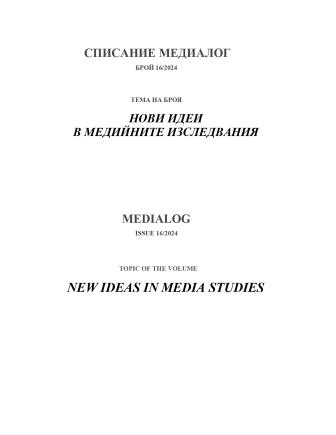
This review presents Martin Marinos's Free to Hate: How Media Liberalization Enabled Right-Wing Populism in Post-1989 Bulgaria (University of Illinois Press, 2023). Marinos's in-depth analysis reveals the close link between the media and the rise of right-wing populism in post-socialist Bulgaria. Marinos focuses on the connections between phenomena such as neoliberalism, racism, populism, and media commercialization.
More...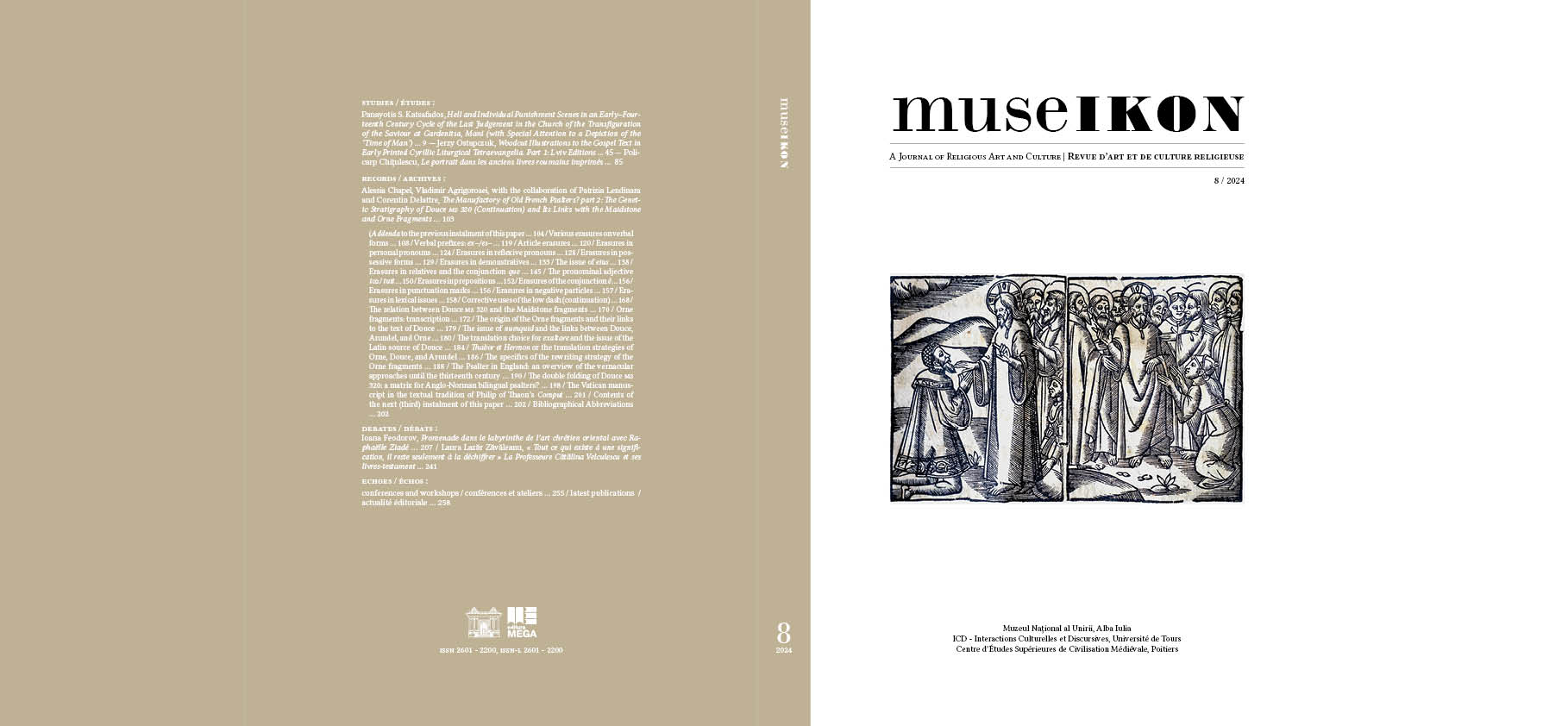
Le présent article se concentre sur les cycles d'images narratives de l'Évangile, présents dans les premiers Tétraévangiles liturgiques imprimés en cyrillique et publiés à Lviv. Les sept éditions des Évangiles publiées par l'imprimerie de la Confrérie de Lviv, ainsi que celle publiée par Mykhailo Slozka, comportent de nombreuses illustrations narratives placées en lien direct avec les versets qui décrivent les scènes représentées. Une étude approfondie de ces cycles évangéliques d'images narratives, ainsi que les changements que les illustrations ont subis dans chaque édition, nous permettent de classer les modèles de représentation en trois groupes, et de diviser les huit Tétraévangiles de Lviv en deux groupes. Deux annexes présentent toutes les images narratives gravées sur bois dans les éditions des Évangiles de Lviv. Le premier appendice contient des représentations d'événements évangéliques dans les Tétraévangiles de Lviv, tandis que le deuxième appendice présente les illustrations narratives de l'édition de Mykhailo Slozka.
More...
The painted, engraved, or sculpted portrait is an attempt to immortalize a person and preserve their memory. Often, portraits served both didactic and aesthetic purposes, particularly in religious texts. In Orthodox books, portraits typically depicted saints rather than individuals contemporary with the time of the book's publication. It is exceedingly rare for an Orthodox book to include the portrait of a person who was alive at the time of publication or who had passed away relatively close to that date. While the practice of including portraits of individuals associated with a book was common in the West, it is a notable exception in the history of Romanian engraving and printing tradition. In this study, we have sought to identify the individuals and volumes printed in the Romanian Lands up to the nineteenth century in which such portraits appeared. We have also examined the motivations behind the inclusion of these portraits, whether engraved in wood or brass. This research was inspired by the portraits of Elder Paisios of Neamţ († 1794), printed in books by his disciples. We will analyze these representations of the great hesychast and then explore several other portraits we have identified in Romanian books thus far.
More...
Le présent article s’inscrit dans la continuité de celui qui a été publié en 2023 dans la même revue (The Manufactory of Old French Psalters: Part 1…). Ce deuxième volet comprend d’abord une section de addenda qui complètent certaines parties du précèdent article. S’ajoutent ensuite les érasures dans diverses formes verbales, suivies par un recensement des corrections liées aux préfixes ex– et es–. D’autres séries d’érasures concernent différentes parties du discours: articles définis; pronoms personnels; pronoms réflexifs; formes possessives; démonstratifs; avec une étude de cas sur les choix de traduction du génitif eius, dont plusieurs documentent l’existence d’un antigraphe. Il s’agit souvent d’une hésitation entre les formes faibles et fortes. Des sections com-plémentaires sont consacrées aux érasures des pronoms relatifs et de la conjonction que; à l’adjectif pronominal toz / tuit; aux prépositions; à la conjonction é; aux signes de ponctuation; et aux particules négatives. L’ana-lyse des érasures du manuscrit d’Oxford, Bibliothèque bodléienne, Douce 320 se termine par un examen détaillé des corrections liées à différents phénomènes lexicaux. L’article porte ensuite sur les rapports entre le manuscrit Douce et les fragments de Maidstone, dont la transcription a été publiée dans le premier volet. Suivent une transcrip-tion des fragments de l’Orne (Paris, Archives Nationales, dossier AB xix 1734) et une étude sur l’origine de ces derniers et sur leurs liens avec le texte de Douce. Les choix de traduction pour le latin numquid documentent les liens entre Douce, Arundel (Londres, Bibliothèque britannique, Arundel 230) et Orne. Les choix de traduction du latin exaltare permettent en partie de restituer le texte latin de la source de Douce. Les différentes stratégies de traduction d’Orne, de Douce et d’Arundel semblent être des réécritures d’antigraphes similaires. Toutes ces ana-lyses montrent que Douce, Arundel, Orne et Maidstone proviennent de deux ou plusieurs gloses vernaculaires apparentées. L’article propose ensuite une perspective globale sur les approches vernaculaires de la traduction des psaumes en Angleterre jusqu’au xiiie siècle, qui documente l’interaction des langues vernaculaires anglaises et françaises avec les textes (et l’exégèse) latins. Il se termine par une discussion (appuyée sur deux exemples du xiie siècle) concernant le double pliage du Douce, lié sans doute à sa circulation et à son emploi dans la réalisation des psautiers bilingues à deux colonnes. Le troisième volet du présent article est prévu pour 2025. Il comprendra la transcription du texte de Douce (avec l’accentuation originale et l’emplacement des érasures), ainsi que plusieurs études complémentaires.
More...
